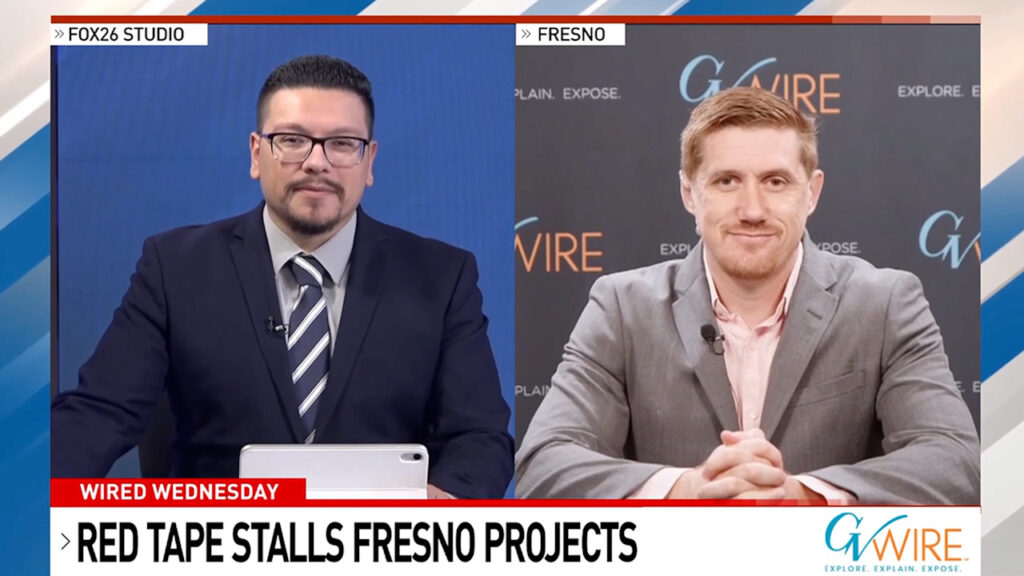Share
|
Getting your Trinity Audio player ready...
|
CEDAR RAPIDS, Iowa — Waves of torrential rainfall drenched California into the new year. Snowpacks in the Sierra Nevada Mountains have swelled to more than 200% their normal size, and snowfall across the rest of the Colorado River Basin is trending above average, too.
While the much-needed water has improved conditions in the parched West, experts warn against claiming victory. About 60% of the region remains in some form of drought, continuing a decades-long spiral into water scarcity.
“The drought is so critical that this recent rainfall is a little like finding a $20 bill when you’ve lost your job and you’re being evicted from your house,” said Rhett Larson, an Arizona State University professor of water law.
Over the years, a proposed solution has come up again and again: large-scale river diversions, including pumping Mississippi River water to the parched west.
Just this past summer, the idea caused a firestorm of letters to the editor at a California newspaper. But interest spans deeper than that. Most recently, the Arizona state legislature passed a measure in 2021 urging Congress to investigate pumping flood water from the Mississippi River to the Colorado River to bolster its flow.
Studies and modern-day engineering have proven that such projects are possible but would require decades of construction and billions of dollars. Politics are an even bigger obstacle for making multi-state pipelines a reality. Yet their persistence in the public sphere illustrates the growing desperation of Western states to dig themselves out of droughts.
“We can move water, and we’ve proven our desire to do it. I think it would be foolhardy to dismiss it as not feasible,” said Richard Rood, professor of Climate and Space Sciences and Engineering at the University of Michigan. “But we need to know a lot more about it than we currently do.”
What’s Being Proposed, and Who is Proposing It?
Formal large-scale water importation proposals have existed in the United States since at least the 1960s, when an American company devised the North American Water and Power Alliance to redistribute Alaskan water across the continent using reservoirs and canals. Widespread interest in the plan eventually fizzled.
Stories of similar projects often share the same ending, from proposals in Iowa and Minnesota to those between Canada and the United States. Yet some smaller-scale projects have become reality.
A Kansas groundwater management agency, for instance, received a permit last year to truck 6,000 gallons of Missouri River water into Kansas and Colorado in hopes of recharging an aquifer. In northwestern Iowa, a river has repeatedly been pumped dry by a rural water utility that sells at least a quarter of the water outside the state. And there are several approved diversions that draw water from the Great Lakes.
On the heels of Arizona’s 2021 push for a pipeline feasibility study, former Arizona Gov. Doug Ducey signed legislation this past July that invested $1.2 billion to fund projects that conserve water and bring more into the state. Among its provisions, the law granted the state’s water infrastructure finance authority to “investigate the feasibility” of potential out-of-state water import agreements.
An in-depth feasibility study specifically on pumping Mississippi River water to the West hasn’t been conducted yet to Larson’s knowledge. He said he’s open to one — but doesn’t think it’s necessary.
“I think the feasibility study is likely to tell us what we already know,” he said, “which is that there are a lot less expensive, less complicated options that we can be investing in right now,” like reducing water use.
Physically Feasible—but Politically?
In 2012, the U.S. Department of the Interior’s Bureau of Reclamation completed “the most comprehensive analysis ever undertaken within the Colorado River Basin” at the time, which analyzed solutions to water supply issues — including importing water from the Missouri and Mississippi Rivers.
Under the analyzed scenario, water would be conveyed to Colorado’s Front Range and areas of New Mexico to help fulfill water needs. It would cost at least $1,700 per acre-feet of water, potentially yield 600,000 acre-feet of water per year by 2060 and take 30 years to construct.
An additional analysis emerged a decade later when Roger Viadero, an environmental scientist and engineer at Western Illinois University, and his graduate students assessed proposals suggested in last summer’s viral editorials.
In their technical report, which hasn’t been peer-reviewed, they calculated that a pipe for moving this scale of water would need to be 88 feet in diameter — around twice the length of a semi trailer — or a 100-foot-wide channel that’s 61 feet deep.
Experts we spoke with agreed the feat would be astronomical. Still, it’s physically possible.
“As an engineer, I can guarantee you that it is doable,” Viadero said. “But there are tons of things that can be done but aren’t ever done.”
Viadero’s team estimated that the sale of the water needed to fill the Colorado River’s Lake Powell and Lake Mead — the largest reservoirs in the country — would cost more than $134 billion at a penny a gallon. The price tag for construction would add to this hefty bill, along with the costs of powering the equipment needed to pump the water over the Western Continental Divide.
Buying land to secure water rights would cost a chunk of cash, too, which leads to an even larger obstacle for such proposals: the legal and political hoops.
Local hurdles include endangered species protections, wetlands protections, drinking water supply considerations and interstate shipping protections. Precedents set by other diversion attempts, like those that created the Great Lakes Compact, also cast doubt over the political viability of any large-scale Mississippi River diversion attempt, said Chloe Wardropper, a University of Illinois Urbana-Champaign professor researching environmental governance.
Trans-national pipelines would also impact ecological resources. Lower Mississippi River flow means less sediment carried down to Louisiana, where it’s used for coastal restoration. Diverting that water also means spreading problems, like pollutants, excessive nutrients and invasive species.
Most notably, the Mississippi River basin doesn’t always have enough water to spare. Drought conditions plagued the region throughout 2022, for instance, prompting concerns over river navigation.
“No one wants to leave the western states without water,” said Melissa Scanlan, a freshwater sciences professor at the University of Wisconsin-Milwaukee. “But moving water from one drought-impacted area to another is not a solution.”
A Perennial Idea
The idea of a pipeline transecting the continent is not a new idea. But, as water scarcity in the West gets more desperate, the hurdles could be overcome one day.
“It’s possible that the situation gets so dire that there is an amount of money out there that could overcome all of these obstacles,” Larson said. “It might be in the trillions, but it probably does exist.”
In the meantime, researchers encourage more feasible and sustainable options, including better water conservation, water recycling, and less agricultural reliance. Other forms of augmentation, like desalination, are also gaining popularity on the national scene as possible options.
Those will require sacrifices, no doubt — but not as many as building a giant pipeline would require, experts said.
“To be talking about pipe dreams, when that’s not even feasible for decades, if at all… It’s a disservice,” Scanlan said. “People need to focus on their realistic solutions.”
RELATED TOPICS:
Categories

Trump Administration Scraps $8 Billion for Climate-Related Projects

Wildlife Advocate, Primate Expert Jane Goodall Dies at 91

Stocks Mixed, Gold Hits Record as US Government Shuts Down















